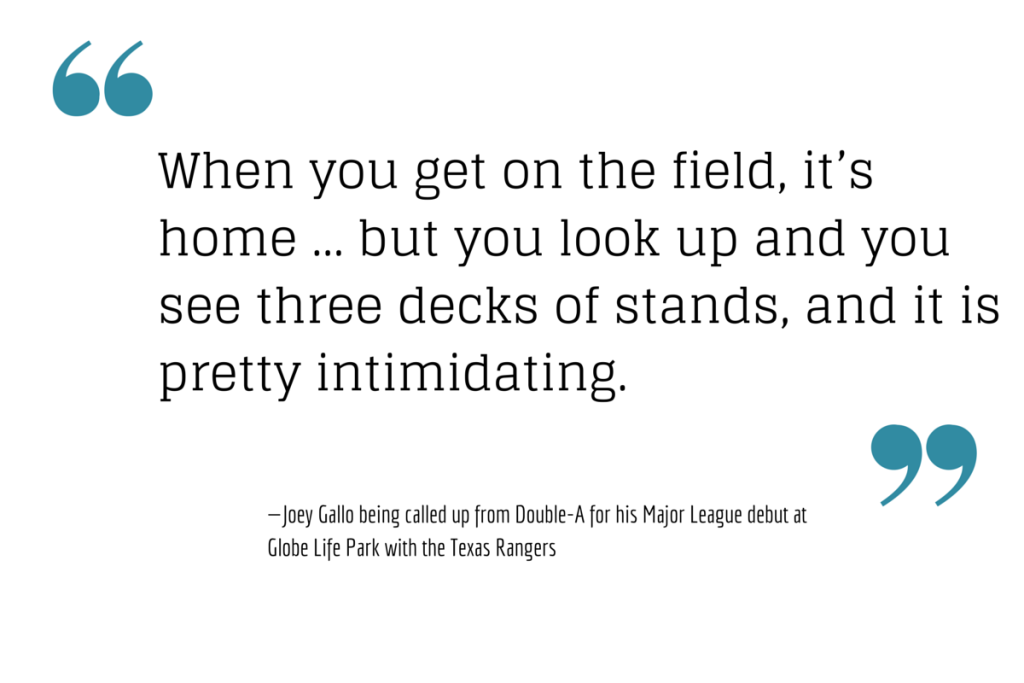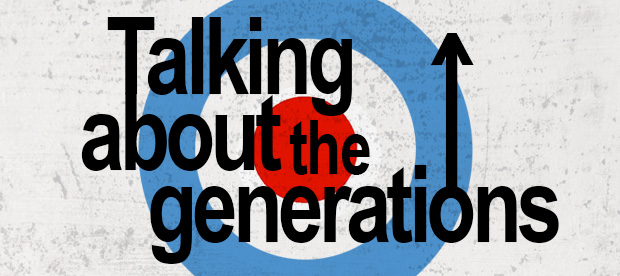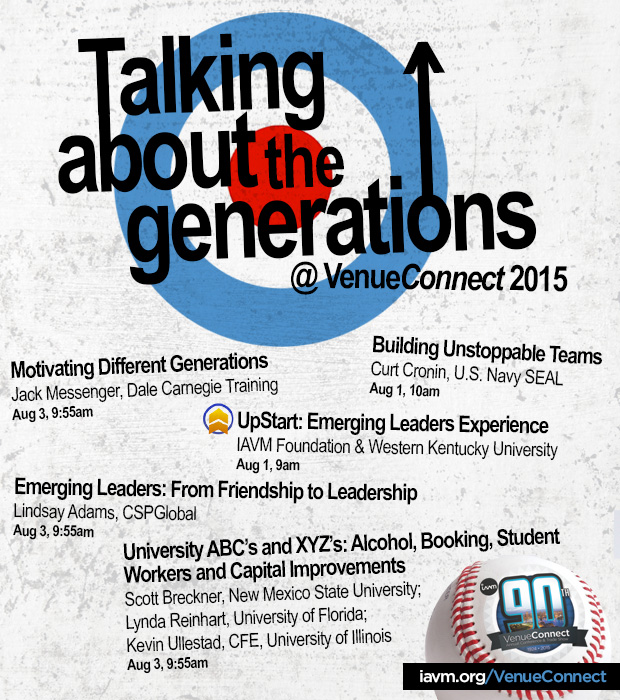A Personal Message to IAVM From Baltimore’s Mayor
We’re not the only ones excited to visit Baltimore this year for VenueConnect. So is Mayor Stephanie Rawlings-Blake.
“Thank you for supporting Baltimore. We appreciate all the love the IAVM family has shown Baltimore in the recent weeks,” Rawlings-Blake said. “We’re excited to host the 90th annual VenueConnect convention, and we look forward to welcoming you and your families in August.”
Please watch the video above to hear the mayor’s personal welcome and to learn more about the city.
Podcast: The Venue, Episode 1
We debuted our new live, call-in podcast, The Venue, last week. We had a blast interacting with members, and we’ve already upgraded our equipment (to get rid of those pesky echoes) for the next episode.
In case you missed the live version, you can listen to the recording above and hear what the Wolfe, myself, and members had to say about live-streaming, selfie-sticks, and comedians.
A shout out, also, to Chuck Tate—house manager and event supervisor at the Luther F. Carson Center for the Performing Arts in Paducah, Kentucky—for being our first call-in member. Thank you for participating.
We plan to have The Venue up on iTunes soon, and we’re looking at recording an episode at Venue Management School next week. Stay tuned!
Leadership Lessons for the Ages
I think I figured out why Millennials are being talked about again in such quantity—it’s because it’s graduation season. They’re entering the workforce. Or maybe they’re already a part of your organization. Nevertheless, you, as a venue manager, will be working with them, so it’s imperative you understand how to motivate and engage them.
However, it’s not just Millennials you have to consider. The Baby Boomers are still working, and more people from that generation are retiring later in life. Then you have the Gen X crowd to accommodate.
One of the ways we’re helping you manage different generations in your organization is through a training session at VenueConnect 2015 in Baltimore, Aug. 1-4. Jack Messenger, vice president of instruction and a certified trainer at Dale Carnegie Training, will lead a discussion on “Motivating and Engaging Different Generations.”
For example, Millennials want a workplace environment that offers flexible hours to allow a work-life balance, managers who trust them to do their work, and the availability of incentives for higher performance, according to a Dale Carnegie Training white paper.
And since more Millennials are in the workplace, that means more of them are in leadership roles. For young professionals, we’re offering a seminar called “From Friendship to Leadership,” led by Lindsay Adams, CSPGlobal, a principal at Teamocracy in Australia. Attendees will learn the essential traits of leadership, the must-do actions of leaders, and the critical items new leaders must avoid.
But wait, there’s more.
U.S. Navy SEAL Curt Cronin will present a session titled “Building Unstoppable Teams,” during which he’ll introduce to attendees an integrated leadership framework that identifies the key values, tasks, actions, disciplines, and attitudes required for success for any generation.
Then we’ll also offer more leadership training with the session, “You Can’t Make Omelettes Without Breaking Eggs: The Messy Work of Refining Your Leadership” Attendees at this session—led by Adams and Paul Bridle, CEO of Excellence Squared Limited—will learn how connecting people, processes, and performance creates profits and how identifying the right measurements and engaging people drives better results.
Whether you’re a current leader or a leader on the rise, VenueConnect offers several sessions to help you be successful. Register now, and we’ll see you in Baltimore!
30|UNDER|30 Spotlight: Dani Cole
Our latest recipient spotlight of the IAVM Foundation’s inaugural class of 30|UNDER|30 is Dani Cole, sales manager at the Tacoma Dome and the Greater Tacoma Convention & Trade Center in Washington.
“We’re in an industry where there are always new trends, new technology, and new expectations that the clients are bringing us,” Cole said when asked what she feels is necessary for future success in the venue management industry. “It is imperative that we are continuing to educate ourselves, that we aren’t allowing ourselves to become complacent or stale, that we are always learning what all these new trends are so that we can create new and exciting experiences every time someone walks in our door. If we can do this, I know that we will stay relevant, we will be competitive, and that we will be remembered.”
One of the benefits of being named a 30|UNDER|30 recipient is a full complimentary registration to VenueConnect in Baltimore. However, Cole will not be able to attend because her two-year-old daughter, Emmy, was recently diagnosed with neuroblastoma, a form of cancer.
Cole created a CaringBridge page to help friends and family stay up-to-date on Emmy.
“If you would like to leave words of encouragement for Emmy or the family on social media please tag #TeamEmmyCole so that when she grows up and looks back at this time in her life she can easily find your messages online,” Cole wrote the page. “Many people have asked how they can help our family, here are two sites that that have been setup by loved ones. If you would like to make a monetary donation please visit http://www.gofundme.com/teamemmycole, or if you would like to provide a meal please visit http://www.takethemameal.com/meals.php?t=HSMZ2586.”
Our thoughts and prayers are with the Cole family and for Emmy’s health.
Do you want to receive a Front Row News weekly digest?
Categories
- Allied (861)
- Architecture (147)
- Arenas (747)
- Career (897)
- Convention Centers (895)
- Education (623)
- Events (1,544)
- Food & Beverage (193)
- Foundation (113)
- Guest Experience (1,496)
- Industry News (2,270)
- Leadership (1,888)
- Marketing (150)
- Membership (2,000)
- Music (213)
- Performing Arts Centers (454)
- Professional Development (409)
- Research (127)
- Safety & Security (442)
- Sports (763)
- Stadiums (608)
- Student (159)
- Technology (516)
- Ticketing (92)
- Touring (82)
- Trends (364)
- Uncategorized (742)
- Universities (218)
- Video (25)
- Young Professional (198)
Twitter Feed
- Twitter feed loading
Recent Posts
- Seattle Convention Center Announces Strategic Leadership Appointment and Growth Initiatives for 2026
- Peggy Daidakis Humbly Made Convention Center History
- Welcome to Our Newest Members
- New Member Benefit! IAVM Partners with Advantage Training to Elevate Staff Readiness and Guest Experience
- Charlotte Convention Center Welcomes Two New Leaders to its Management Team
Categories
- Allied
- Architecture
- Arenas
- Career
- Convention Centers
- Education
- Events
- Food & Beverage
- Foundation
- Guest Experience
- Industry News
- Leadership
- Marketing
- Membership
- Music
- Performing Arts Centers
- Professional Development
- Research
- Safety & Security
- Sports
- Stadiums
- Student
- Technology
- Ticketing
- Touring
- Trends
- Uncategorized
- Universities
- Video
- Young Professional
Archives
- December 2025
- November 2025
- October 2025
- September 2025
- August 2025
- July 2025
- June 2025
- May 2025
- April 2025
- March 2025
- February 2025
- January 2025
- December 2024
- November 2024
- October 2024
- September 2024
- August 2024
- July 2024
- June 2024
- May 2024
- April 2024
- March 2024
- February 2024
- January 2024
- December 2023
- November 2023
- October 2023
- September 2023
- August 2023
- July 2023
- June 2023
- May 2023
- April 2023
- March 2023
- February 2023
- January 2023
- December 2022
- November 2022
- October 2022
- September 2022
- August 2022
- July 2022
- June 2022
- May 2022
- April 2022
- March 2022
- February 2022
- January 2022
- December 2021
- November 2021
- October 2021
- September 2021
- August 2021
- July 2021
- June 2021
- May 2021
- April 2021
- March 2021
- February 2021
- January 2021
- December 2020
- November 2020
- October 2020
- September 2020
- August 2020
- July 2020
- June 2020
- May 2020
- April 2020
- March 2020
- February 2020
- January 2020
- December 2019
- November 2019
- October 2019
- September 2019
- August 2019
- July 2019
- June 2019
- May 2019
- April 2019
- March 2019
- February 2019
- January 2019
- December 2018
- November 2018
- October 2018
- September 2018
- August 2018
- July 2018
- June 2018
- May 2018
- April 2018
- March 2018
- February 2018
- January 2018
- December 2017
- November 2017
- October 2017
- September 2017
- August 2017
- July 2017
- June 2017
- May 2017
- April 2017
- March 2017
- February 2017
- January 2017
- December 2016
- November 2016
- October 2016
- September 2016
- August 2016
- July 2016
- June 2016
- May 2016
- April 2016
- March 2016
- February 2016
- January 2016
- December 2015
- November 2015
- October 2015
- September 2015
- August 2015
- July 2015
- June 2015
- May 2015
- April 2015
- March 2015
- February 2015
- January 2015
- December 2014
- November 2014
- October 2014
- September 2014
- August 2014
- July 2014
- June 2014
- May 2014
- April 2014
- March 2014
- February 2014
- January 2014
- December 2013
- November 2013
- October 2013
- September 2013
- August 2013
- July 2013
- June 2013
- May 2013
- April 2013
- March 2013
- February 2013
- January 2013
- May 2012
- March 2012
- December 2011
- November 2011
- October 2011
Recent Comments
- Frank Bradshaw, Ph.D., CVE on John Meyer, CVE, a Tireless Advocate of Certification for Venue Professionals, Has Died
- Neil Sulkes on Hilary Hartung, Friend to Many in Venue Marketing, Has Left Us
- Jason Parker, CVE on The Devastation of Hurricane Helene and How We Can Support One Another
- Larry Perkins on Touhey Testifies Against Speculative Ticketing Before Congressional Subcommittee
- Peter Secord on Major Players for Planned Elkhart Amphitheater Were in the Mix at VenueConnect




